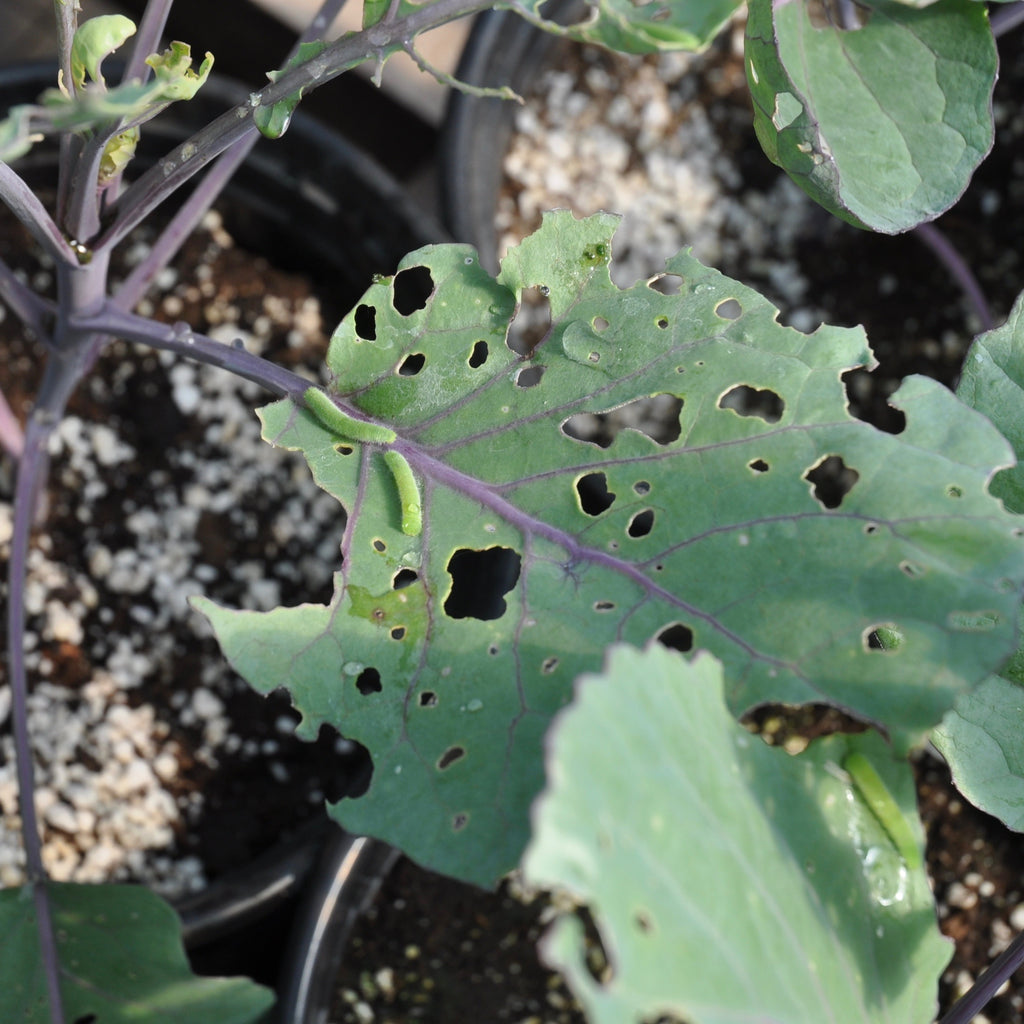You have surely spotted the flitting dance of delicate white butterflies above the cabbage patch. You know, the one that is inevitably followed by little green worms that so efficiently strip-down your beautiful crop. These are cabbage months, and their progeny the cabbage worm. They are a common sight in gardens across Canada, and they can make a quick meal of all types of brassicas (everything from broccoli to kale to mustards, and of course cabbage).
There are in fact two types of cabbage moth in North America, one native and one introduced from Europe. Both overwinter in soil, even in cold climates, and the emerging adult butterflies lay tiny yellow eggs on the undersides of brassica plants; these go on to hatch into the green worms that cause the damage. The pressure on plants increases as the season goes on, as multiple generations reproduce and the time required for each life cycle decreases in warmer weather. The worms are easy to spot on flat or open brassicas such as kale, while they will burrow into broccoli or cauliflower heads, making a mess of things and potentially surprising your dinner guests!

What to do?
Early season
- Cabbage moth caterpillars have many natural predators (and introduced predators, such as back yard chickens!), so encouraging diversity in your garden through intermingling and the choice to avoid pesticides is officially a strategy to get ahead of cabbage worms
- Companion planting with tansy, garlic, tomatoes, mint, nasturtiums, onions and sage is considered a useful strategy for managing cabbage moths/worms
- Look for the yellow eggs on leaf undersides, and wipe these off; not allowing the first generation to emerge makes a big difference
- Use floating row covers to prevent the cabbage moth from laying eggs on your plants... of course this only works if the adults are not emerging from the soil below the row cover, so practice crop rotation for your brassicas
Mid-summer
- Use yellow sticky cards to catch the moths; effective but can also catch beneficial insects so keep a close eye on things
- Apply BT-K to the tops and undersides of the plant leaves; this is a proven method for controlling leaf eating caterpillars in a highly targeted and safe manner (BT-K is a naturally occurring bacteria that disrupts the caterpillars when feeding on sprayed leaves; non-target caterpillars will not be harmed)
- Squish or hand pick the caterpillars; this too is a very effective, safe method for managing cabbage worms!
- Spray plants with concentrated garlic juice; we have not tried this ourselves, but many gardeners swear by it!
- Employee your friendly neighbourhood chickens! They are very good at finding and eating the cabbage worms (plants have to be fairly robust and well developed to handle the pecking)
Fall
- Tidying up the debris from your brassica crops will reduce the chances of trouble the following growing season
- Some gardeners recommend tilling in the soil where brassicas have grown, as the moths will be destroyed and any plant material pushed underground, disrupting the over wintering cycle (others feel that tilling is not a great idea, as it can damage soil and bring weed seeds to the surface)
- Plan to rotate your brassica crops to different locations within your garden each season







